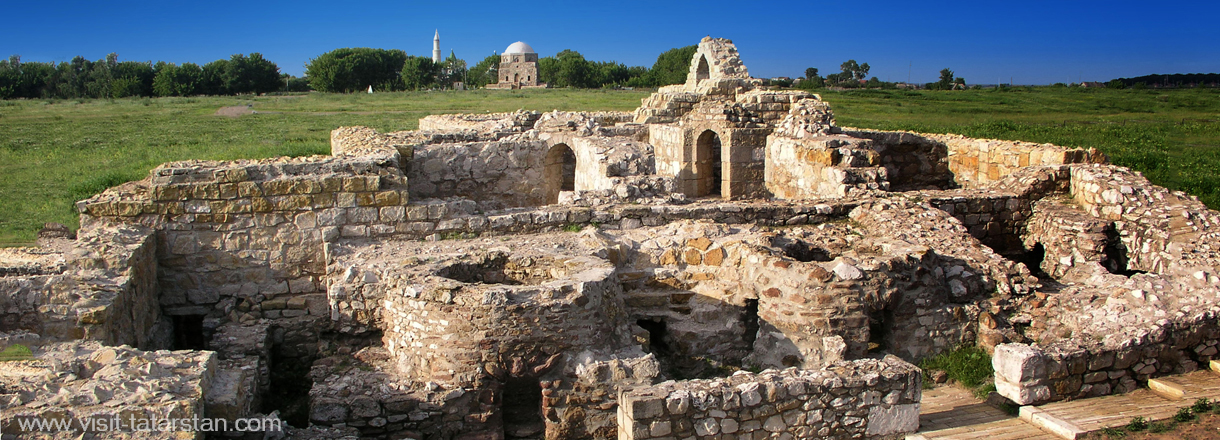Ruins of the ancient town of Bolgar, capital of the vanished state of Volga Bulgaria, are located on the left bank of the Volga River, 140 kilometres away from Kazan. Founded in the 10th century, it used to be an economic, political and cultural centre of Volga Bulgaria.
The Bolgar Historical and Archaeological Complex is the northernmost monument of Muslim architecture and a unique example of the 13th-14th century Bolgar-Tatar art of building. Ruins of the Cathedral Mosque and Grand Minaret that survived the centuries can be seen in the central part of the town. The Northern Mausoleum, where members of Bulgar nobility were buried, is located nearby. Among other ancient buildings of this period are the Black and White Chambers, Eastern Mausoleum and Khan’s Bath.
Tourists are also offered to visit the Museum of Bolgar Civilisation housed in the river port’s building and the Memorial Complex in Honour of the Official Adoption of Islam by the Volga Bulgars in 922 where the world’s largest printed Koran is stored. Bolgar’s other must-visits are the Khan’s Palace, Healer’s House and craft workshops, as well as the White Mosque and the Museum of Bread that are located outside the Southern Gates of the town.
Bolgar can be reached from Kazan by bus or by river transport.
In June 2014, the Bolgar Historical and Archaeological Complex was included in UNESCO’s World Heritage List.
